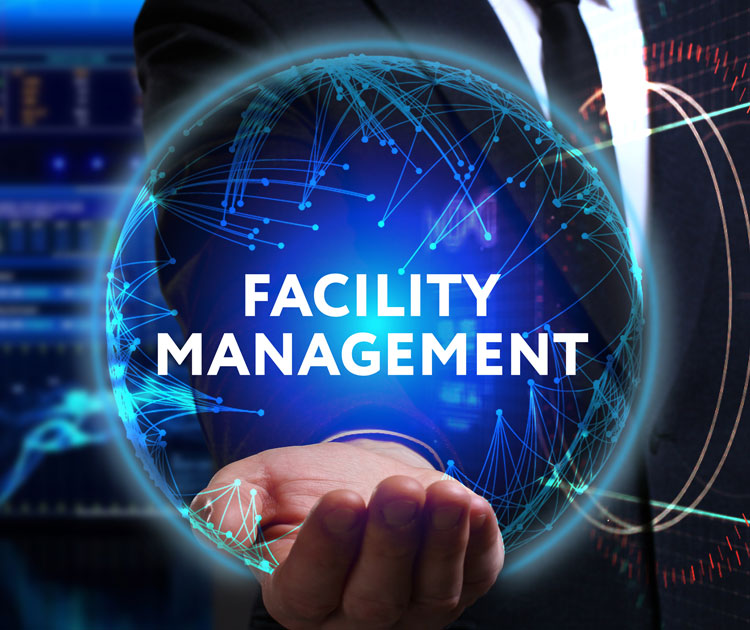Key Reasons to Invest Total Facility Management for Your Facility
Key Reasons to Invest Total Facility Management for Your Facility
Blog Article
Top Benefits of Total Facility Management for Streamlined Workflow
Total Facility Management (TFM) represents a critical technique to improving operational performance by incorporating different services, such as upkeep and protection, under a unified management structure. The question remains: what details advantages can organizations harness from adopting TFM, and how might these benefits transform their functional landscape?
Boosted Functional Effectiveness
Improved operational efficiency is a main benefit of executing total facility management (TFM) strategies. TFM encompasses a comprehensive method to taking care of a facility's resources, procedures, and facilities, ultimately simplifying operations. By combining numerous services-- such as maintenance, cleansing, safety and security, and area management-- TFM enhances and reduces redundancies sychronisation amongst various operational functions.
The combination of modern technology further magnifies this performance. Advanced facility management systems offer real-time information analytics, making it possible for facility supervisors to make informed decisions that improve workflow and resource allowance. Anticipating upkeep strategies, for instance, prepare for equipment failures before they happen, lowering downtime and extending possession lifespan.
Furthermore, TFM advertises standard processes throughout different divisions, making certain consistency and quality in service delivery. This uniformity decreases operational interruptions and cultivates an extra joint workplace. Consequently, employees can concentrate on their core duties, driving productivity and improving total efficiency.

Expense Reduction and Savings
Implementing total facility management (TFM) not just improves operational performance however additionally substantially contributes to set you back decrease and cost savings. By combining different services under a solitary management structure, organizations can remove redundancies and streamline procedures, therefore lowering operational prices. TFM enables better purchase methods, permitting firms to bargain bulk acquiring contracts with providers and company, bring about lower prices.
Moreover, TFM stresses precautionary upkeep, which lessens unforeseen breakdowns and extends the life expectancy of essential tools. This proactive method not only minimizes fixing costs but likewise improves the dependability of facilitiess, guaranteeing nonstop procedures. Additionally, energy effectiveness campaigns, frequently a vital emphasis of TFM, lead to considerable savings on energy bills, as facilitiess are enhanced for minimized power usage.
Improved Resource Management
Reliable resource management is a keystone of total facility management (TFM), allowing organizations to optimize the usage of their assets and labor force. By executing TFM strategies, companies can comprehensively examine their resource appropriation, making sure that every asset is utilized efficiently and efficiently. This all natural method enables the recognition of underperforming resources and the capacity for reallocation or enhancement.
In enhancement, TFM facilitates the combination of innovation for real-time surveillance of resources, which aids in predicting upkeep requirements and protecting against expensive downtime. By leveraging data analytics, companies can make educated decisions concerning resource release, eventually enhancing performance and minimizing waste.
Additionally, TFM promotes a culture of constant improvement, urging teams to consistently review and fine-tune their resource management practices. Total Facility Management. This aggressive position not only minimizes functional my sources interruptions yet likewise cultivates technology, as employees are empowered to suggest improvements based upon their firsthand experiences with resource usage
Streamlined Interaction Networks
In total facility management, structured interaction networks play an essential function in cultivating cooperation and performance across teams. Efficient communication makes certain that all stakeholders, including facility supervisors, upkeep team, and provider, are aligned with organizational objectives and functional requirements. By establishing clear lines of interaction, groups can promptly deal with problems, share updates, and implement services, thus lessening downtime and boosting productivity.
With systematized communication platforms, information is quickly available, enabling real-time updates on upkeep demands, resource appropriation, and task timelines. This transparency not only minimizes misconceptions yet also equips staff members to make informed decisions swiftly. In addition, structured communication assists in much better control during emergencies, making certain that all personnel are informed and can react quickly.

Boosted Concentrate On Core Activities
A vital benefit of total facility management is the enhanced emphasis on core tasks, permitting companies to concentrate on their main company purposes - Total Facility Management. By contracting out non-core functions such as maintenance, protection, and cleaning, firms can reroute their sources and energy towards critical campaigns that straight contribute to their competitive benefit and growth
Total facility management incorporates numerous functional jobs under a solitary umbrella, fostering efficiency and minimizing redundancy. This loan consolidation not just simplifies procedures yet additionally boosts liability, ensuring that every aspect of the facility runs harmoniously without drawing away focus from what absolutely matters-- core organization features.
Furthermore, this approach enables workers to dedicate their time and efforts to jobs that drive advancement and enhance consumer satisfaction, rather than getting slowed down by functional difficulties. see this With a dependable facility management companion taking care of day-to-day procedures, companies can recommended you read achieve better dexterity, react promptly to market adjustments, and keep a sharper focus on their mission.
Eventually, boosted concentrate on core tasks causes boosted total efficiency, enabling companies to strengthen their market position and fulfill their tactical goals better. - Total Facility Management
Verdict
In conclusion, Total Facility Management considerably boosts operational effectiveness by consolidating vital solutions and leveraging data analytics for educated decision-making. Cost decreases and improved resource management add to total cost savings, while structured communication networks foster collaboration among stakeholders.
Total Facility Management (TFM) stands for a strategic method to improving functional effectiveness by incorporating different solutions, such as maintenance and safety and security, under a unified management framework.Enhanced functional performance is a main benefit of executing total facility management (TFM) strategies. Advanced facility management systems supply real-time information analytics, allowing facility managers to make enlightened choices that enhance process and resource allotment.Implementing total facility management (TFM) not just improves operational efficiency yet likewise dramatically adds to cost decrease and financial savings.Efficient resource management is a keystone of total facility management (TFM), allowing organizations to maximize the use of their assets and labor force.
Report this page